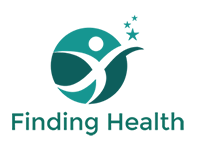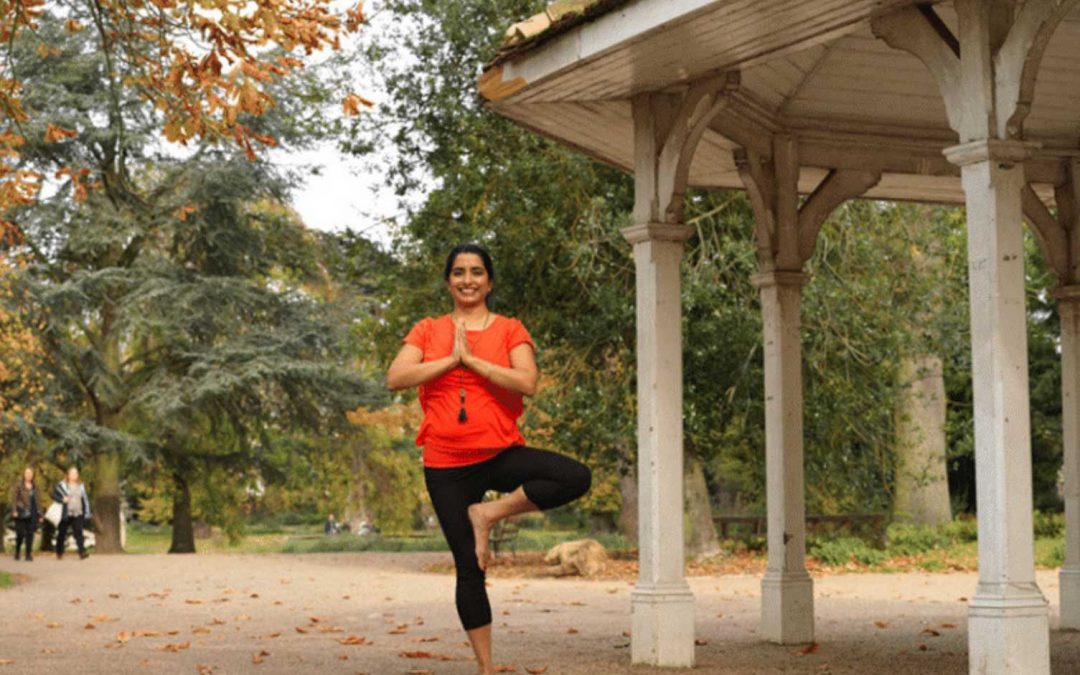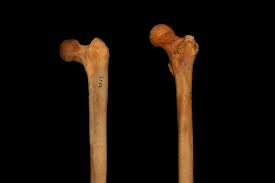You may have seen last week’s BBC report about Yoga and hip problems: www.bbc.co.uk/news/health. As a yoga teacher, trainer of yoga teachers and an NHS osteopath, I think this was a well-timed article. I often see students, trainees and teachers in my classes or private practice who have unknowingly allowed their yoga practice to harm rather than support their bodies.
What’s the problem ?
Firstly, no 2 hips are the same – from your left to your right, from mine to yours. We are born with different anatomy, lives our lives differently and use our bodies in different ways – so not every hip can do every movement, let alone every yoga posture. If you can’t achieve Lotus position, it’s not because you are a bad yogi – your hips might never let you ! Here is a photo of some varying and completely normal hip anatomy and you can see the difference between one and the other. Both of these individuals would have been able to move their ball-and-socket hip joint very differently.
Secondly (and sadly) yoga is often ‘sold’ as a purely physical ladder to climb. In some yoga systems you ‘progress’ through levels: Level 1 you do this, Level 2 you are more advanced and you ‘do more’ – as if we are working towards achieving a ‘perfect’ posture. In my view, this is completely against the values of yoga – including non-competitiveness, non-violence (to ourselves as well as others), acceptance and awareness. Life is challenging enough, don’t make Yoga another ‘achievement’ !
Many yoga teachers insist on having a focus on ‘Hip Opening’, whatever that means. The hip is one of the most stable and strong joints of the body, held together with bands of strong ligaments (it would take a car crash or rubgy injury to dislocate a hip!). The hips are supposed to MOVE but not be FLOPPY. If ligaments are overstretched then they do not recoil like muscle tissue, so it is possible to overstretch a hip. Forcing the hip to move more than it wants to is not a good thing as you can cause lasting changes. Be wary of extreme postures that ‘open’ the hips but really mean they are overstretching the ligaments.
A big surprise: Just because it’s “yoga” doesn’t mean it can’t cause an injury !
There is a fallacy that yoga asana (the postures and physical practice) is 100% safe for everyone. Yes yoga is a great practice for finding health. BUT – we wouldn’t expect anyone taking up marathon running or pumping iron to get away without a strain or ache every now and then – so why would we expect this in yoga ?
Many modern yoga classes involve repetitive flow-like movements, which if done again and again can put the same strains and stresses on the body as any other physical exercise. Common injuries in yoga students (and I treat some of them!) include rotator cuff (shoulder) muscle problems, low back aches and knee / hip pain. So learn what is safe for YOUR BODY – might you need some cross training or targeted strengthening alongside your physical practice ?
My philosophy is to use yoga as a means to find the best health you can with the body you are given – so for some it might mean resting more, for others working on strengthening, others still may need to stretch, breathe, meditate or chant – whatever gives health to the body, mind and breath. Yoga Citta Vriti Nirodha” after all – yoga is not just about the ‘body beautiful’, it is about finding stillness in the mind !
A big surprise No. 2: Yoga Teachers aren’t ALL bendy because they do yoga
Don’t look at the teacher as a guide for what YOU can do in your body – lots of teachers have injuries that they don’t discuss with their students, and many yoga teachers come from dance / gymnastic or other physical professions. Remember that the yoga bodies you see in the yoga centre are a self-selected population, not a proper representative sample of the real world. The chances are that they were lithe and flexible BEFORE they started yoga – which is why they became yoga teachers rather than weight lifters. (I know this seems jokey, but don’t abandon all reason when you enter the yoga class – use your common sense !)
The good news: Yoga teachers are getting more knowledgeable
Luckily the yoga world is waking up to keeping itself safe. Articles like this highlight areas of concern. Many teachers teach safe and individual alignment with health rather than postural perfection as a primary goal. Try different styles of yoga and see what makes your body feel better AFTER you do the class. I teach Applied Anatomy to the yoga teacher trainees at Triyoga Europe’s biggest yoga centre, helping yoga teachers learn how to prevent injuries for themselves and their students. If your yoga teacher can’t answer your questions about your anatomy, then find someone how has the correct training.
How to be safe in YOUR yoga practice
Start with an honest and realistic appraisal of yourself. What is it that you want from yoga ? Is it mental ease and clarity, a body beautiful, better health overall ? Be realistic and find the teacher that supports this need. They are definitely out there if you take someo time to find them.
Don’t be scared of your hips. Get to know them – where are the muscles ‘stiff’ and where do the bones actually stop moving – because the latter might be your limit. If you are not sure, ask your local osteopath or physio to help you determine where your natural range of movement lies. Not everyone is ever going to be able to do the splits or Lotus position, no matter how hard they try.
Mix it up. The body likes variation in movement – repetition risks injury. Cross-train even in the yoga centre: Try a pilates class now and then, Swap flow for Iyengar. Do some weights…
Don’t push yourself ! (too much). Don’t be lazy either. Find the right level of effort and ease in your yoga practice just like in the rest of life. Know the difference between good and bad pain – stretching is fine, pain is not. If you are experiencing pain, get a healthcare professional to check it out before you exercise.
For some tips, check out this advice I wrote for Triyoga A safe Yoga practice which has a useful Top 10 list of dos and don’ts of keeping safe if you are starting out.
Any questions, get in touch !


